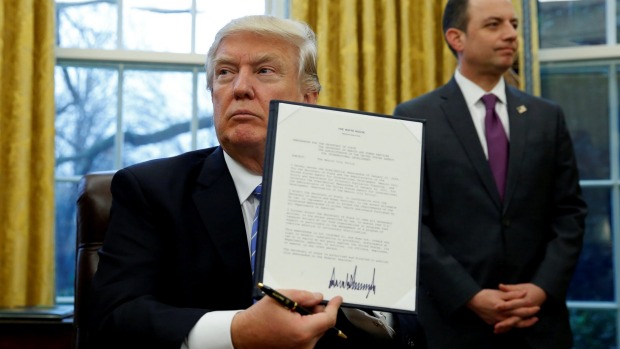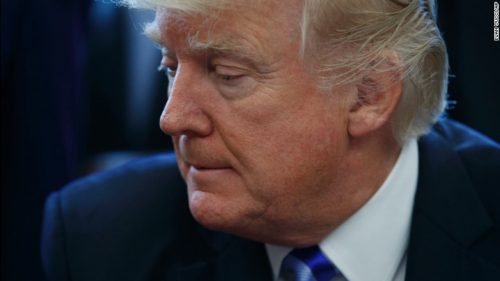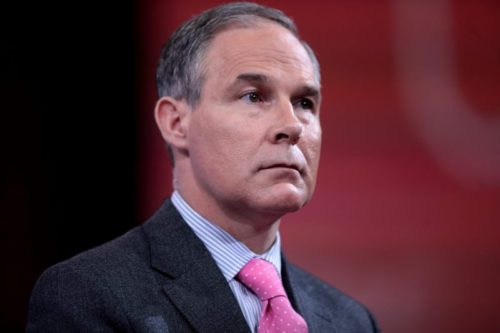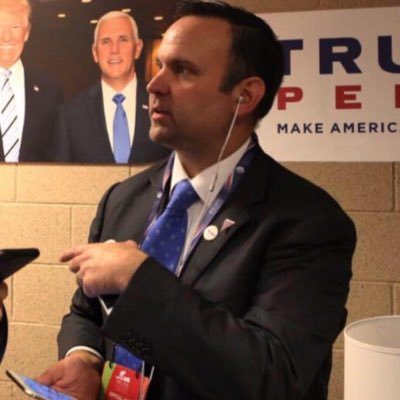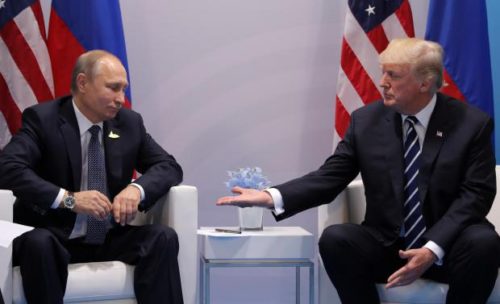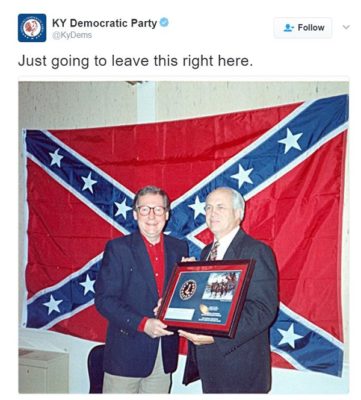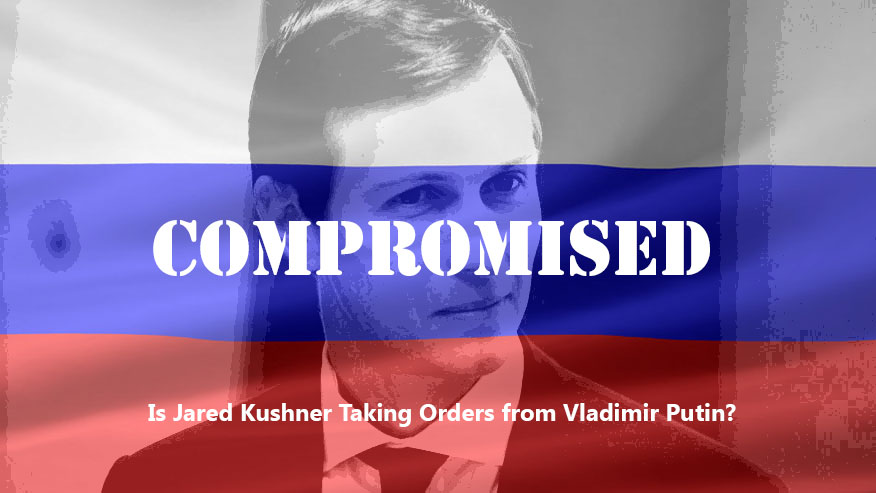
JARED KUSHNER did not set out to betray his country. He didn’t grow up in Livingston, New Jersey, a ten minute drive from my own suburban hometown, and set his sights on becoming a KGB double agent. I will give him the benefit of the doubt on that.
But given what we now know about his participation in a meeting that what was, at best, an overture by the Russians to see if the Trump campaign would coordinate with them to defeat Hillary Clinton, it’s fair to ask the question: Whose side is Jared Kushner on?
Kushner is notoriously private. Secretive, even. He’s had a Twitter account for eight years and has yet to post a single tweet. He rarely gives interviews. I’ve heard his voice exactly once. He’s basically the J.D. Salinger of the Trump Administration. Most of what we know about him derives from the Forbes profile that ran in December, 2016, a month after the election, which told the story of how Boy Wonder Jared applied Moneyball principles to the flailing, disorganized Trump campaign, and won his father-in-law the White House. That profile offers insight into Kushner’s role with both the campaign and its dealings with Russia, and demands a second reading in light of his upcoming closed-door testimony before the Senate Intelligence Committee.
~
Trump asked Kushner to take over the social media arm of the campaign on November 9, 2015, a full year before Election Day, on a flight back from a rally in Springfield, Illinois. He took some time to get acclimated, but he was good at the job:
At first Kushner dabbled, engaging in what amounted to a beta test using Trump merchandise. “I called somebody who works for one of the technology companies that I work with, and I had them give me a tutorial on how to use Facebook micro-targeting,” Kushner says. Synched with Trump’s blunt, simple messaging, it worked. The Trump campaign went from selling $8,000 worth of hats and other items a day to $80,000, generating revenue, expanding the number of human billboards–and proving a concept. In another test, Kushner spent $160,000 to promote a series of low-tech policy videos of Trump talking straight into the camera that collectively generated more than 74 million views.
It was not until June, 2016, however—after Trump had secured enough delegates to capture the nomination—that the social media campaign began to really take off.
By June, the GOP nomination secured, Kushner took over all data-driven efforts. Within three weeks, in a nondescript building outside San Antonio, he had built what would become a 100-person data hub designed to unify fundraising, messaging and targeting. Run by Brad Parscale, who had previously built small websites for the Trump Organization, this secret back office would drive every strategic decision during the final months of the campaign. “Our best people were mostly the ones who volunteered for me pro bono,” Kushner says. “People from the business world, people from nontraditional backgrounds.”
People like…oh, I don’t know…Russians? Because it was in early June, at the same time that Kushner assumed control of these data-driven efforts, that his brother-in-law, Donald J. Trump, Jr., arranged the fateful meeting with Kushner, Manafort…and several Russian nationals with close ties to Vladimir Putin, including at least one suspected FSB agent and one money laundering expert.
Before that June 9 meeting, Kushner was just an ambitious real estate developer—albeit one in charge of a company that was leveraged to the hilt, of which more later—trying to help out his father-in-law. On June 9, if not before, Putin had kompromat on him. Whatever his intentions beforehand, by attending that meeting, Kushner compromised both himself and his father-in-law’s campaign. He was in hock to Russia.
Also in June, Kushner and Brad Parscale enlisted the aid of Cambridge Analytica, a Mercer-financed company, which is possibly more evil than the FSB:
This wasn’t a completely raw startup. Kushner’s crew was able to tap into the Republican National Committee’s data machine, and it hired targeting partners like Cambridge Analytica to map voter universes and identify which parts of the Trump platform mattered most….Kushner built a custom geo-location tool that plotted the location density of about 20 voter types over a live Google Maps interface.
(Cambridge Analytica is litigious, so I hesitate to expound upon the outfit more here. I shall confine myself to pointing out that 1, it is under congressional investigation for its possible role in collusion with the Russians, and 2, Steve Bannon is involved.)
In June, then, in order to win the White House for Trump, Kushner chose to get in bed with two distinct baskets of deplorables: Russian intelligence and the Cambridge data team. One might imagine that he’d learned a lesson from his father, who went to prison for a similar kind of dirty trickery, but no: Jared moved forward.
As the election barreled toward its finale, Kushner’s system, with its high margins and up-to-the-minute voter data, provided both ample cash and the insight on where to spend it. When the campaign registered the fact that momentum in Michigan and Pennsylvania was turning Trump’s way, Kushner unleashed tailored TV ads, last-minute rallies and thousands of volunteers to knock on doors and make phone calls.
What won the election, per Forbes, is “Kushner’s system.” By November, might that system have included aid from the Russians, both monetary and technological? Was it really Kushner who did this “unleashing,” or a bot army marshaled by Putin? How exactly did the campaign “register” that change in swing-state momentum? Some researchers have suggested that Kushner’s “stealth data machine” was in actuality something quite sinister. (I won’t even get into how the entire fundraising operation was monetized, with funds used to buy more ads in order to raise yet more funds, a veritable Mobius strip of revenue).
In the event, Kushner made his choice, and he won the election for his father-in-law. Hey, family first, right?
But his motives may not have been completely pure. At the time, as mentioned, his company was in dire financial straits. He needed a cool $1 billion—billion with a B—in new investment capital to save his debt-ridden building at 666 Fifth Avenue. The Russians surely knew this, and may well have facilitated the $285 million loan he’d eventually receive, in October, from Deutsche Bank; it would not have been the first time Deutsche engaged in shady financial dealings with the Russians. Indeed, the New York Times this week reported that Trump’s relationship with Deutsche is again under scrutiny. Trump himself even hinted that he would fire special counsel Robert Mueller if Mueller began to look into these financial dealings.
Perhaps this was Kushner’s reason for asking the Russian ambassador, Sergei Kislyak, if he could establish a secret back channel to communicate directly with Moscow, via the Russian embassy—which he did on either December 1 or 2, 2016. (He’d already had at least three phone conversations with the multi-chinned ambassador by then, per Reuters, and had at least made Kislyak’s acquaintance at a Trump campaign event in April).
This may also have been why he met with Sergei Gorkov, trained FSB agent and president of Vnesheconombank (VEB), the Russian state bank that was, and remains, on the US sanctions list for its close ties to Putin. “The bank maintained…that the session was held as part of a new business strategy and was conducted with Kushner in his role as the head of his family’s real estate business,” according to the Washington Post. (The White House, meanwhile, claimed this was a “diplomatic meeting,” whatever that means.) Whatever the case may be, Gorkov flew directly to Putin immediately after the rendezvous, halfway around the world, ostensibly to report back in person. Wherefore the urgency, if all they had discussed was real estate?
Kushner declined to cite either meeting on his SF-86 security clearance form, which is a felony…or would be if the GOP Congress chose to pursue it. Indeed, we only know about these clandestine meetings because of great investigative journalism by our best news organizations. Given Kushner’s penchant for secrecy, this suggests that there are other meetings we don’t yet know about. As it is, we have no idea what was said, or promised, during any of these discussions. The return of compounds? The lifting of sanctions? Anything else? Despite this lapse, Kushner retains his seat at tippy-top-secret security briefings and enjoys the full trust of an erratic president. He’s arguably one of the most powerful men in the world right now.
So: a quiet, reserved guy, known for keeping his mouth shut and not leaking, has a series of meetings with high-level agents of a known adversary of the United States—a brutal dictator who has taken active measures to tamper with our election. Don Jr. claimed the June 9 meeting was about “adoptions,” which means the Magnitsky Act, which means sanctions; this indicates quid pro quo was on the table. At the time, Kushner’s company was under enormous financial strain, so he had personal incentive to play ball; a few months later, the company was given a sizable bailout loan by a bank with a recent history of shady dealings with said dictator. A nothingburger, you say?
It may well be that there is a benign explanation for all of this, but I honestly can’t come up with one. Neither, apparently, could his attorney, Washington bigwig Jamie Gorelick, who dropped Kushner as a client immediately after the Don Jr. email bombshell. Why would she do that, unless he withheld information from her, too?
~
It’s tempting to regard Jared Kushner as a little twerp, an undeserving nebbish who somehow gets to boink Ivanka and also run the country. Certainly the idea that this guy can bring peace to the Middle East and also end the US opioid crisis is ridiculous. But what if Trump had good reason to give him the heavy lifting? What if Jared Kushner is far and away the most competent person in the White House? What if he can actually get shit done? And what if he’s working for the Russians?
Most of the attention on “RussiaGate” has focused on Trump, and rightly so. Trump’s Russia ties are as long as the ones around his neck, and fishy as all get out. The President is so loud, and demands so much of the spotlight, that an unassuming eminence grise like Kushner can operate in the shadows with impunity. This is troubling, because we have no clue where his allegiances lie. For all we know, Jared Kushner is the greatest threat to national security since Julius & Ethel Rosenberg. Certainly he should be viewed as such until we know for sure.
Let’s hope that Monday, the Senate Intelligence Committee gets some answers. We need to know if Trump’s unelected consigliere is compromised—or, rather: how compromised he might be.

